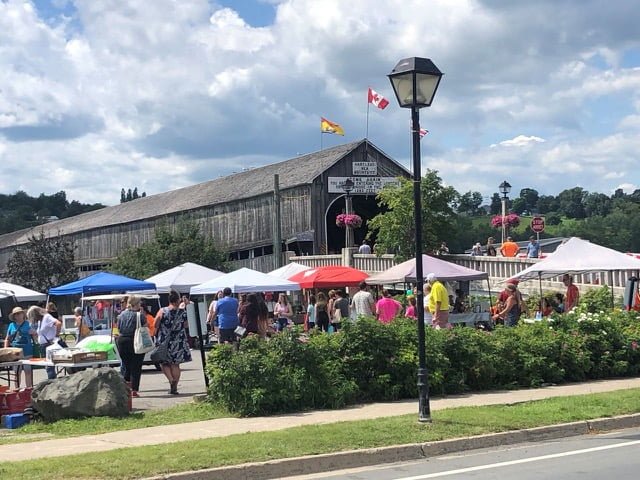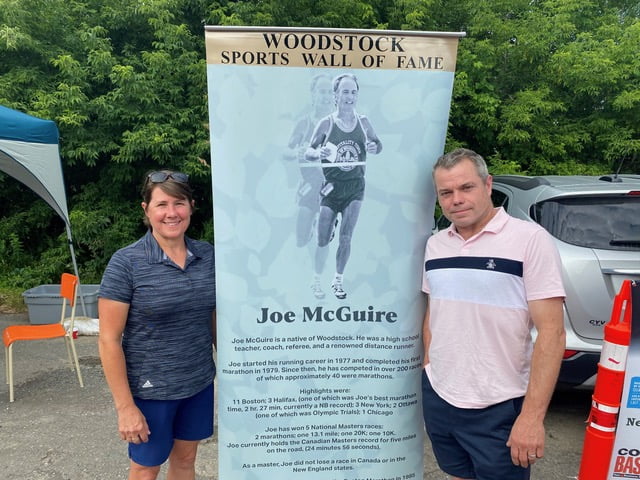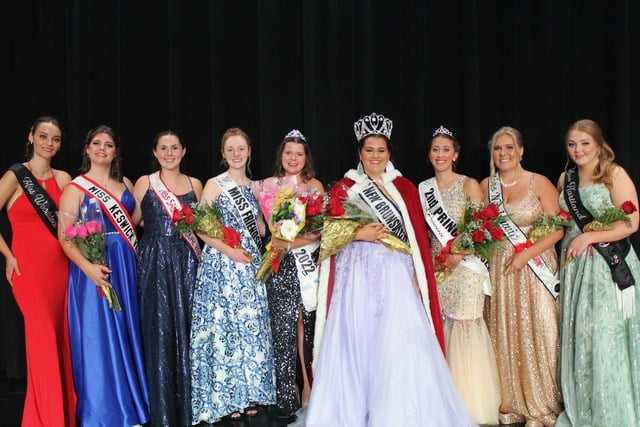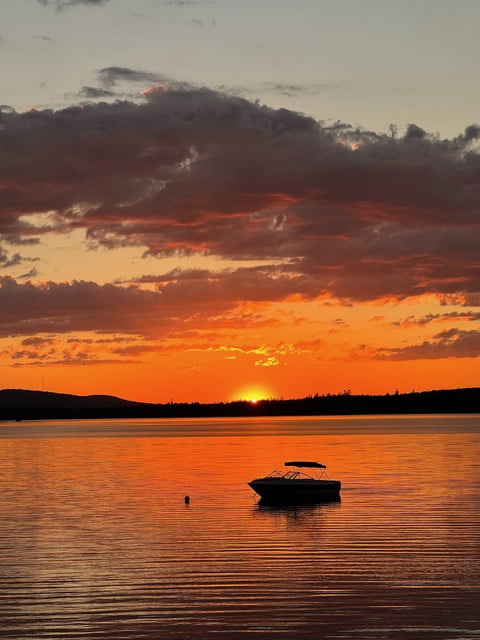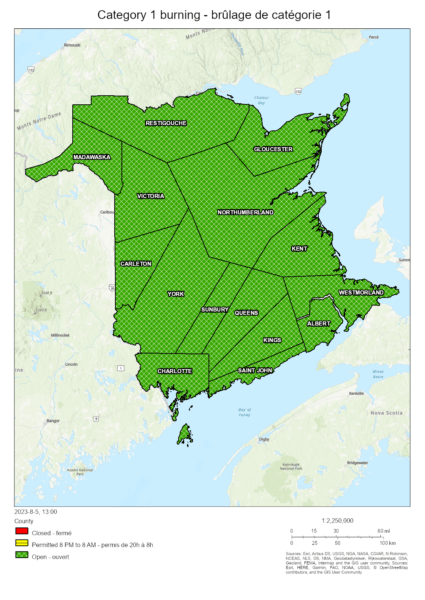Water Protectors again protect Miramichi Lake from rotenone
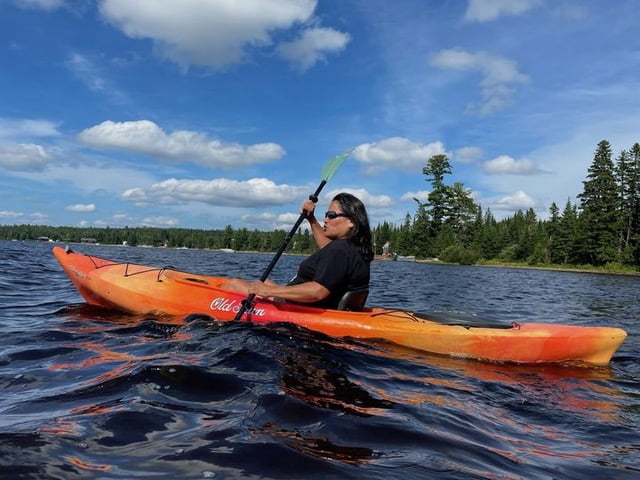
Andrea Polchies paddles along Miramichi Lake. For the second straight year she and other Water Protectors help keep the lake free of the fish-killing agent, Noxfish II with active ingredient rotenone. (Theresa Blackburn photo)
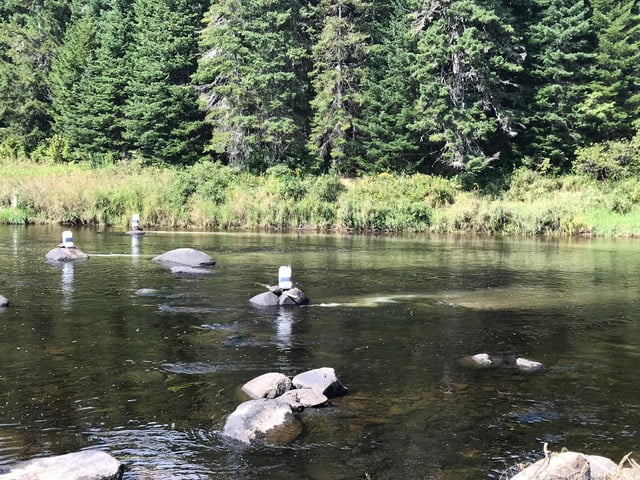
Drips sit on rocks as the Working Group applies Noxfish II to Lake Brook and a portion of the Southwest Miramichi River on Sept. 8. (Submitted photo)
Woodstock First Nation Band Councillor Andrea Polchies and other Water Protectors secured an agreement over the weekend of Sept 17 and 18 to end any further attempts to treat Miramichi Lake with the fish-killing agent, Noxfish II, this year.
The agreement, or consent order, filed with the Court of King’s Bench in Woodstock, states the North Shore Micmac District Council, Inc. agreed to no further treatment this year.
The weekend agreement cancelled the need for the Sept. 20 Court of King’s Bench hearing to deal with Polchies’ legal action filed Sept. 16 against the NSMDC.
The NSMDC, with the Atlantic Salmon Federation and others, are part of the Working Group which attempted over the past two summers to treat the lake with the rotenone-based poison as part of its bass-eradication project.
Polchies, as part of the Wolastoqewi mothers and grandmothers and an Indigenous environmental organization called Connecting to the Land, successfully halted the Working Group’s plans by maintaining a nearly constant presence on the lake over the past two summers.
“I’m happy to be home,” said Polchies on Sept. 20, following the official legal registering of the agreement signed by the Working Group over the previous weekend.
Polchies’s lawyer Charles Bryant of Saint John filed the motion on behalf of his client and negotiated the agreement with the Working Group.
He said the agreement deals with this year only.
“The future is not yet determined,” Bryan said. “We have no agreement on how we move forward.
The Working Group declined requests for comment.
Neville Crabbe, executive director of communications for the Atlantic Salmon Federal and spokesman for the Working Group, confirmed only “the project would not proceed as planned this year.”
He added the River Valley Sun should direct any further requests for information to the NSMDC but added, “at the request of North Shore, there will be no statement forthcoming at this time.”
Bryant said he can’t speak for the NSMDC, but as far as he knows at this time, the Working Group “intends to move forward again next year.”
He said Polchies and the Water Protectors are committed to consultation over the winter to ensure the law is followed. Any talks must include the full involvement of the Wolastoqey nation.
Polchies said her group would look to experts such as Carleton University biologist Steven Cooke to identify safe methods to eradicate or control smallmouth bass in the Miramichi River watershed.
Bryant said legal action in federal court against the Department of Fisheries and Oceans remains on the table.
Although the Water Protectors successfully kept Noxfish II out of Miramichi Lake for the second straight year, the Working Group managed to treat Lake Brook and 15 kilometres of the Southwest Branch of the Miramichi River.
“We could have protected the brook and river, but there were only three of us,” said Polchies.
A significant part of Polchies’s legal challenge against the NSMDC raised what she deemed the Working Group’s violations of conditions posed by DFO and the Department of Environment and Local Government in its approval of the proponent’s plan.
Polchies’s court document cited violations include switching Phases 1 and 2 of its plan.
The court document contends the approved plan called for one treatment of Miramichi Lake, Lake Brook East Branch Lake Brook and a section of the Southwest Miramichi River, followed by one additional treatment of the Brooks and the River.”
The document noted any subsequent phases of project modifications required environmental approval.
On Sept. 8, the Working Group began the project by introducing Noxfish II to the brooks and river, not the lake.
Polchies’s court filing includes the Working Group’s failure to adequately post notice of its plans and its failure to maintain communication with cottage owners,
Polchies contends the Working Group applied the substance despite knowing people were on the water in the immediate vicinity.
The court filing also noted, as Bryant stressed in court filings last year and this year, that the proponents move forward with the project with consultation with Wolastoqey communities.
The Sept. 8 application of Noxfish II led to the arrest of Esgenoôpetitj First Nation man Wayne Novey, a Connecting to the Land member after he confronted crews as they applied the toxin to the brook.
Novey shut off the flow of Noxfish II and took the barrel to the Water Protectors campsite, where Public Safety officers arrested him.
Polchies condemned the decision to apply the poison with little or no warning. She said they left behind all species of dead fish without collecting them as required.
“It was a fiasco,” she said.

